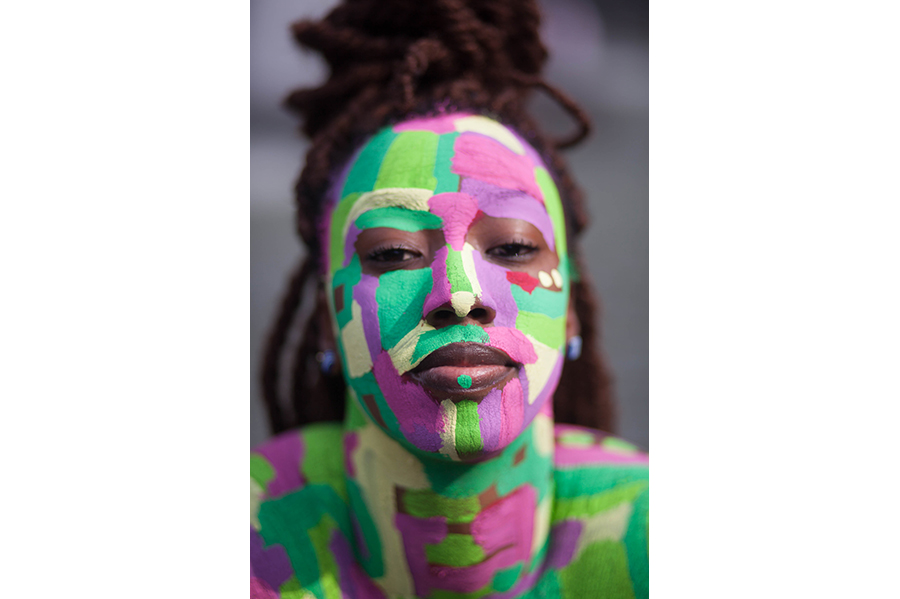

“Anytime I do something different, I feel this immense sense of confidence. I compare it to when I first shaved my hair off. The more you painted on me the more confident I became and the more I wanted to be out in the world”
Photographer: Timothy Smith
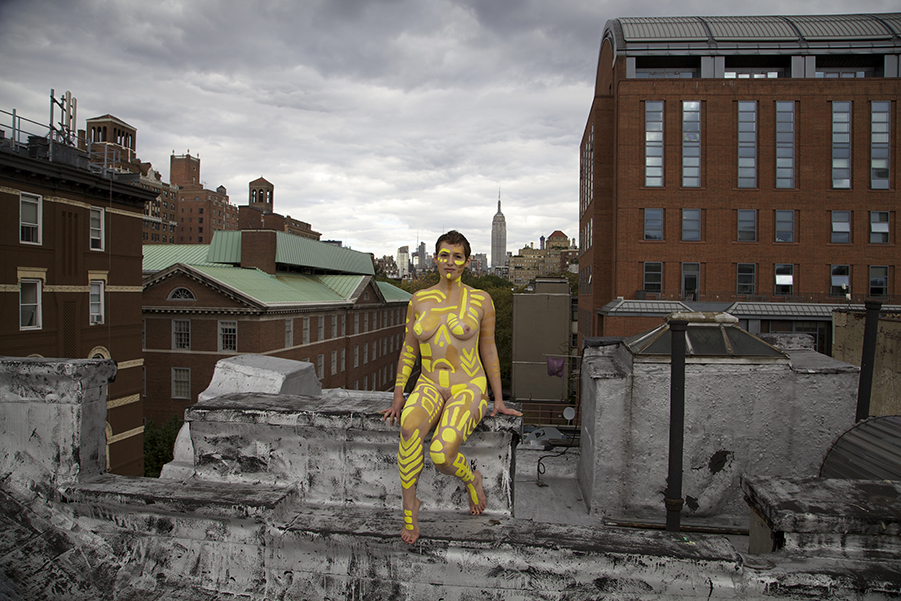

“I don’t feel painted on. I feel like this is what I should look like all the time.”
Photographer: Tony Herbas
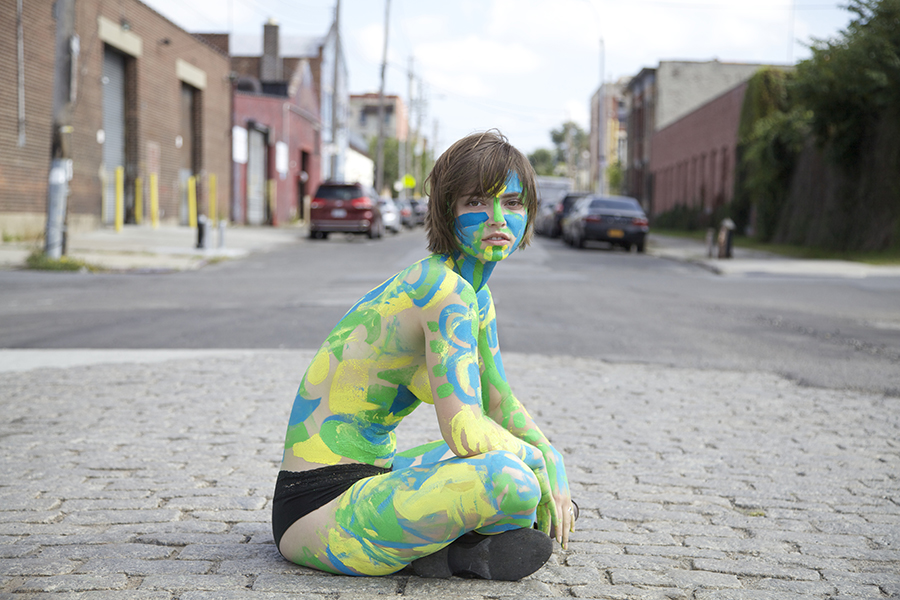

"I claimed ownership of my body, I claimed my ownership of these streets, I claimed ownership of play."
Photographer: Tony Herbas
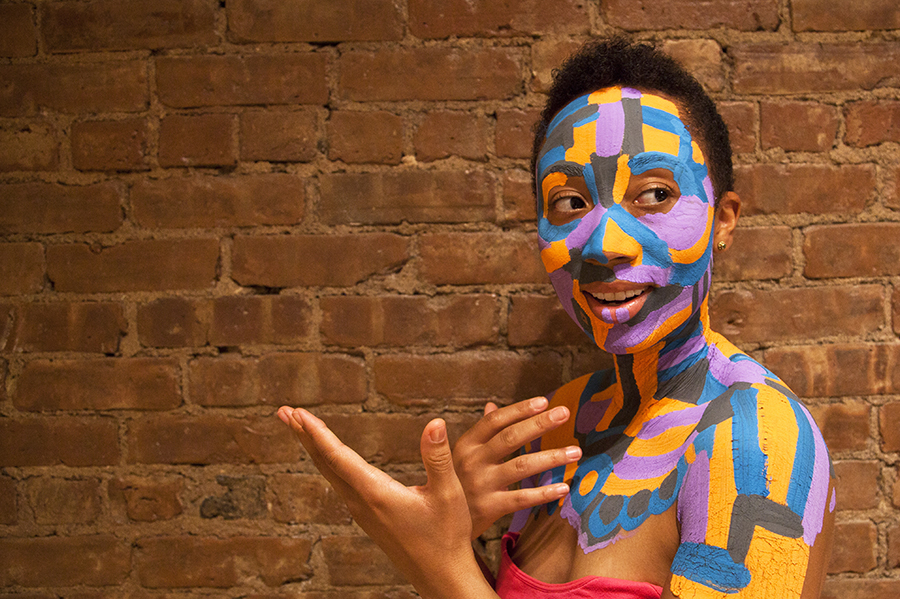

“It brought me back to childhood. It reminded me of my mom doing my hair.”
Photographer: Tony Herbas
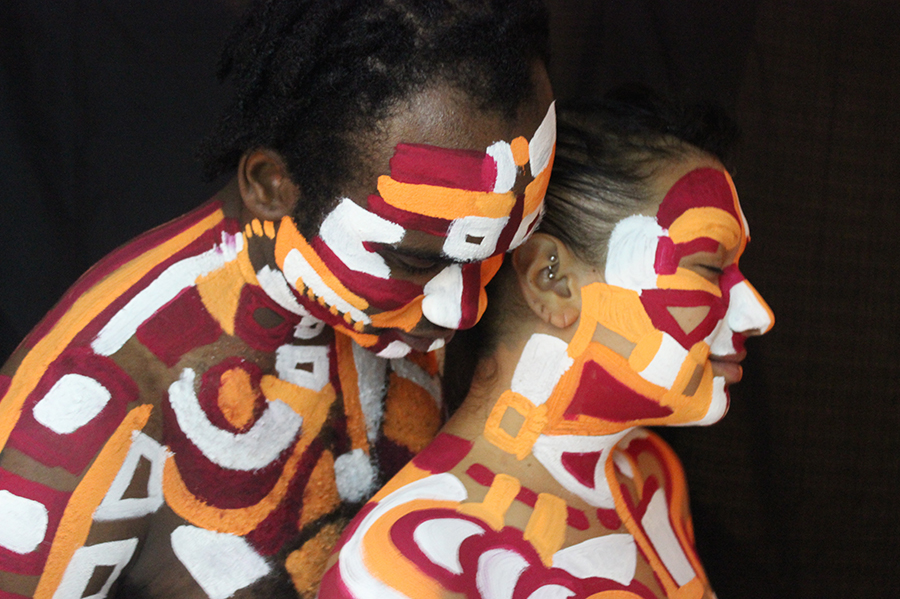

“There is no sense of time. I don’t know what time it is and I don’t really care.”
Photographer: Tony Herbas


"It was refreshing to be in the nude and not trying to be sexy. Not being perceived as sexy by everyone is part of the liberation; you’re just free. You’re a blank canvas.”
Photographer: Tony Herbas


“You’re physically changing, you assume an identity, and that identity is liberating. Meanwhile, you become more aware of your body without actually caring what it looks like.”
Photographer: Tony Herbas
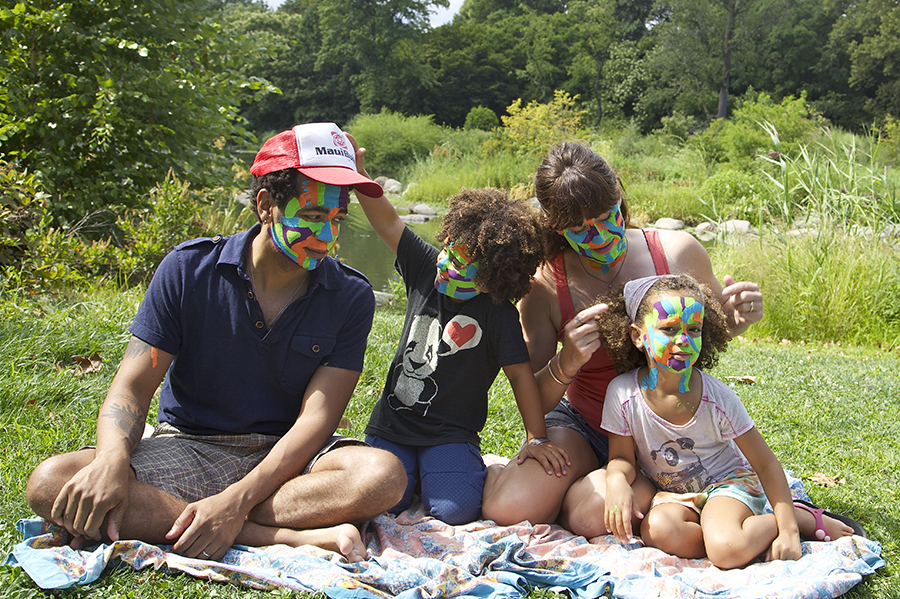

“It was a bonding experience—being painted on together and then wiping it all off together.”
Photographer: Tony Herbas


“After you left I called my friends before meeting them for dinner and warned them ‘I’m kind of blue right now.’ I think they thought emotionally because when I showed up at the restaurant they were so shocked: ‘You are actually blue.' I kept forgetting how blue I was all night.”
Photographer: Tony Herbas
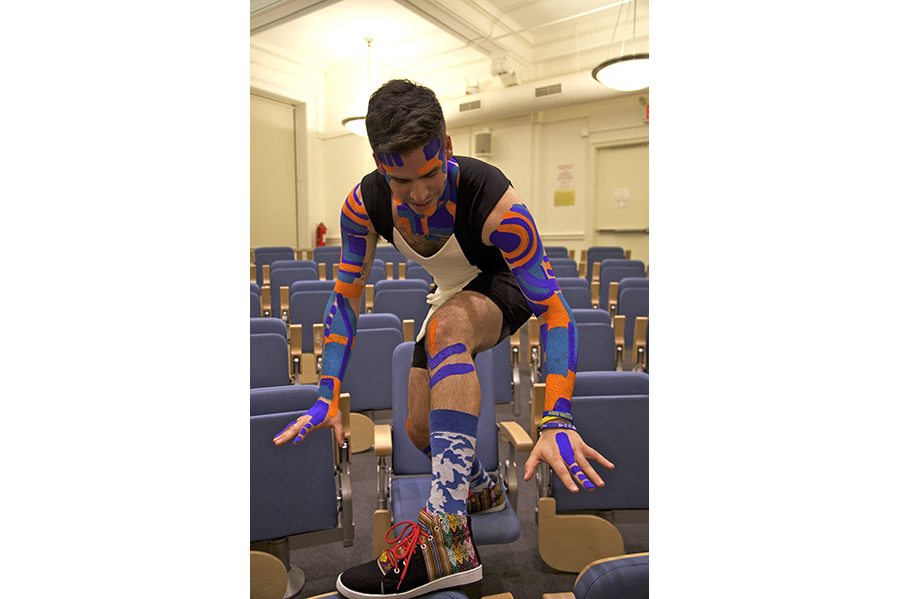

“I felt like I turned out beautiful because we worked together to capture a me that you normally can’t see all the time. That’s why I feel proud. That’s why I feel like I was a pretty object.”
Photographer: Tony Herbas
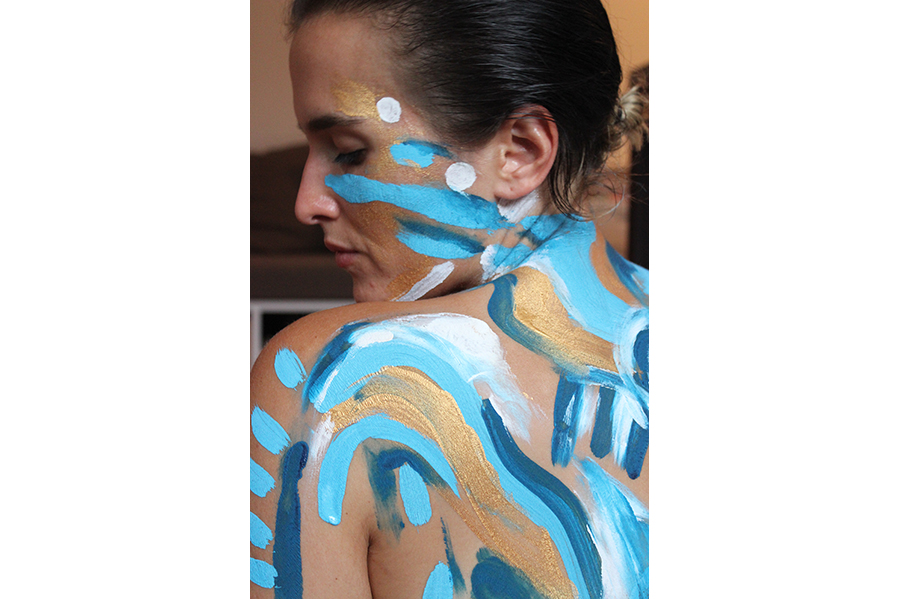

“It felt restorative—like a baptism, like walking in the ocean, or a mud spring.”
Photographer: Jiji Kikhia
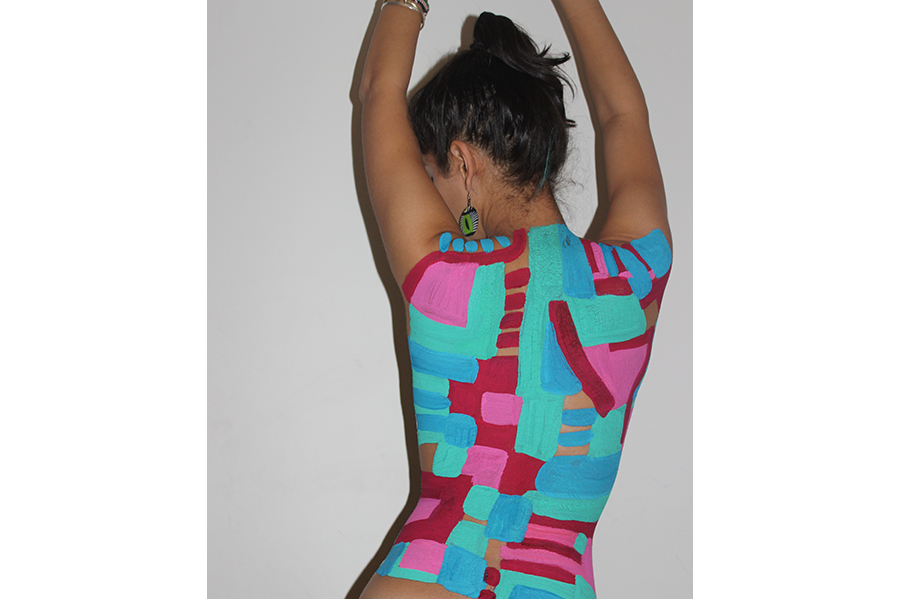

"This is how I feel on the inside. I’d like to be more nude, feminine, and bold but I censor myself all the time. This space and context gave me permission to be more myself."
Photographer: Jiji Kikhia
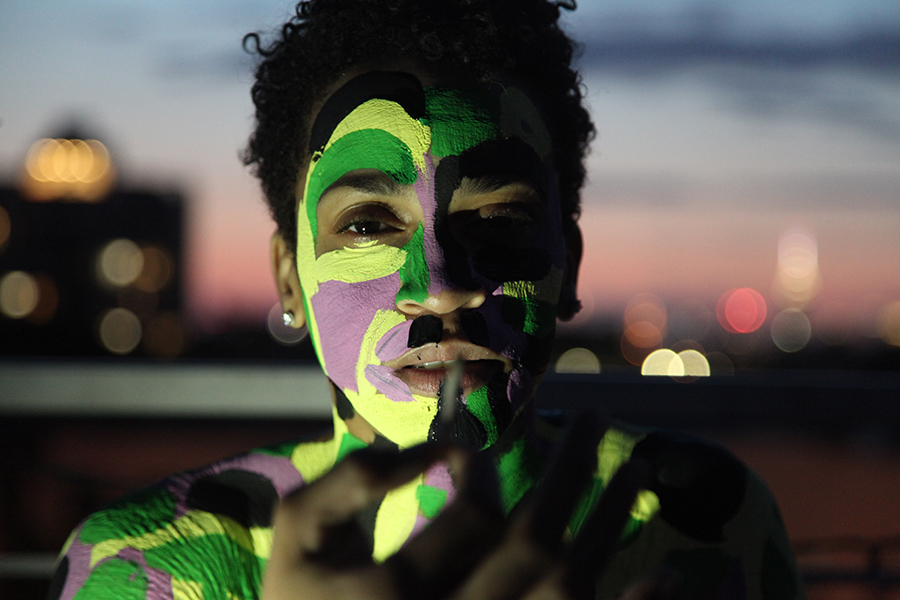

“I don’t care.”
Photographer: Tony Herbas
In this project, I deliberately and openly approach the body not as a one-dimensional static object with typical “x” and “y” curves, but as a feeling body that is telling a story through abstract shapes and colors. As I paint directly on the figure, a literal and metaphorical conversation begins to resonate through a delicate communion between the participant and me. It is a documentation of human unfolding, where two subjective truths collide and merge. The participants on whom I paint are living, emotional entities, with histories, biographies, hopes, and desires. Their brave willingness to make this transparent is what feeds the artistic process and reveals a story. Meanwhile, the abstract and transient nature of the work attempts to free the participant of rigid or conventional definitions of the body. For a brief moment an expansive space is created where the participant, the audience, and I can deconstruct and reconstruct our thoughts, judgments, and impulses concerning the human body. The abstract line attempts to make the figure more whole by connecting parts of the body that are not traditionally connected. As a result, both the audience and the participant are freed from a gaze that is constantly measuring, comparing, and scrutinizing. Essentially, I am not enhancing the body or accentuating any preferred parts of it; instead I engage in an intentional celebration of the human figure, through the use of colorful geometric shapes, and I operate through a lens that treats every body part as an equal part of a whole, fluid, and expressive spirit.
This portfolio documents some of the work Jiji Kikhia created in "Integrating Body Awareness Techniques into Body Painting," an independent study with Professor Robin Powell.

























